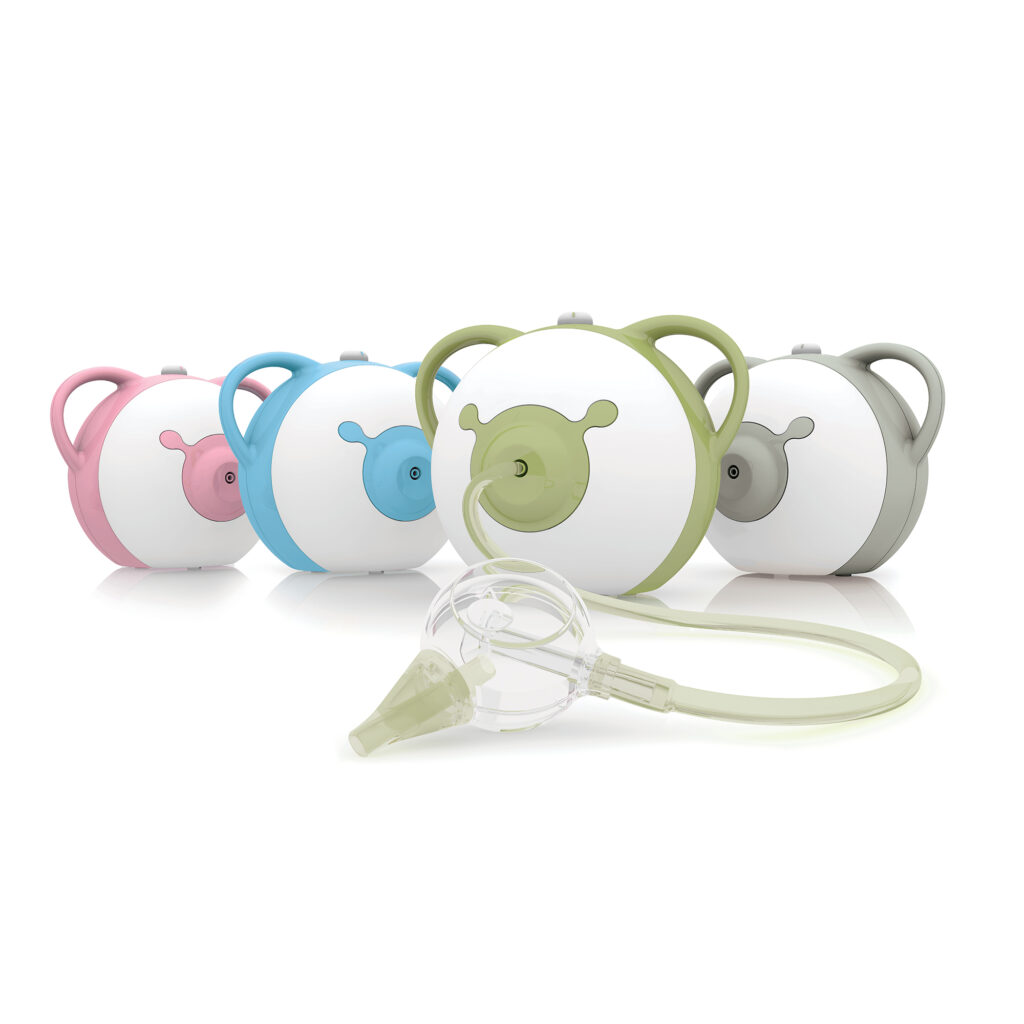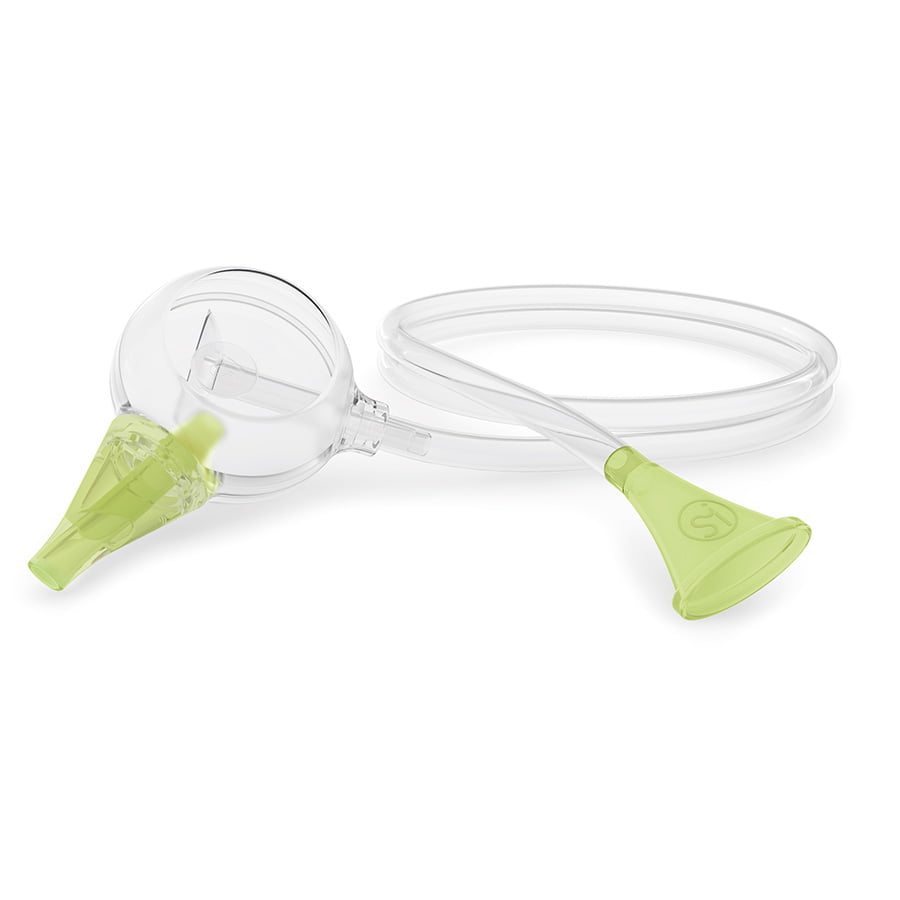

RSV in children – can a nasal aspirator help?
As a parent, you have probably heard the mysterious-sounding name RSV a little too often in recent years. Is it something to be afraid of? How to deal with it? Can a nasal aspirator help? In this article, we will help you understand what RSV is and how to react when your child brings it home.
Understanding the enemy
Respiratory Syncytial Virus (RSV) is a common viral infection affecting the respiratory system, particularly in infants and young children. RSV is highly contagious, causing mild to severe symptoms. It is a leading cause of bronchiolitis and pneumonia in children under one year of age. The virus is transmitted through respiratory droplets and direct contact with an infected person or contaminated surfaces.
RSV is characterized by various symptoms, including coughing, sneezing, nasal congestion, sometimes fever, and difficulty breathing. Most cases of RSV are mild and resolve on their own, but it can be particularly severe in infants, in some cases leading even to hospitalization.

What can help against RSV?
Medications are usually not recommended as in many cases RSV goes away after a week or two. Remember to talk to the paediatrician before giving any medication to your child! However, there are many things that you can do to ease a child’s discomfort and relieve symptoms.
- Supportive home care. A lot of rest and love create perfect conditions for recovery.
- Drinking fluids. Preventing dehydration is vital to our health and is the basis for the proper functioning of our body.
- Humidified air. It enhances nasal breathing and helps to get rid of the congestion.
- A nasal aspirator. It is good to keep it close when your baby has a stuffy nose.
Don’t hesitate to seek medical attention if your child’s symptoms worsen or if difficulty in breathing appears. Severe RSV infections can be life-threatening, especially for infants!

How can a nasal aspirator help?
Nasal aspirators are valuable tools for parents when dealing with RSV since nasal congestion in children can be one of its symptoms. In times like these, an electric or manual nasal aspirator will become your best ally. Here’s how a nasal aspirator can provide relief:
- Clearing congestion. Nasal aspirators are specifically designed to suction mucus from a child’s nasal passages. This can provide immediate relief from congestion, allowing the child to breathe more comfortably.
- Improving sleep. When a baby has a stuffy nose at night it can disrupt sleeping, leading to discomfort and irritability. By using a nasal aspirator for clearing their nasal passages, children are more likely to sleep better, which is crucial for their recovery.
- Enabling children to drink. Clearing a baby’s nose before offering fluids can make it easier for them to drink, which, as we already know, is important in the recovery process. Especially in the case of newborns, who breathe mainly through their nose, it is crucial to make the nasal passage free.

Tips for using a nasal aspirator
When using a nasal aspirator to help a child with RSV, it’s essential to follow these guidelines:
- Use saline solution. Before suctioning, it is recommended to use saline drops to moisten and loosen the mucus in your child’s nose. This makes it easier to remove with the aspirator. Remember to wait 1-2 minutes until the excess mucus flows out of the nose, wipe it away with a tissue, and only then start using the nasal aspirator.
- Choose a medical device. There are various types of nasal aspirators available. To be sure that you choose a safe option, bet on a certified medical device.
Read more: 4 factors that make a nasal aspirator safe. - Pay attention to technology. You need to know that not all nasal aspirators work effectively. Look for the one that operates based on airflow to guarantee correct operation.
Read more: My nasal aspirator is not effective! Why? - Make your life easier. In times of illness, you will use the nasal aspirator a lot. Make sure it is simple to use and clean and save yourself time and work.
Read more: How to choose a nasal aspirator?

You can also skip the research and bet on Nosiboo right away to provide the best care for your child. All the Nosiboo nasal aspirators are certified medical devices, safe to use even from the 1st day of a child’s life. What is more, thanks to their airflow-based operation they not only clear the nasal cavity, but they can reach the area of paranasal sinuses as well. Nasal aspirators are one of the most essential tools that parents can use to help their little ones breathe easier during an RSV infection. Choose the one that fits you best:
Main picture: @siemapandy
Bibliography:
Centers for Disease Control and Prevention (2023). Respiratory Syncytial Virus Infection (RSV). https://www.cdc.gov/rsv/about/symptoms.html
Mayo Clinic (2023). Respiratory syncytial virus (RSV). https://www.mayoclinic.org/diseases-conditions/respiratory-syncytial-virus/symptoms-causes/syc-20353098
University Hospitals (2021). How To Recognize RSV in Your Baby – and What To Do. https://www.uhhospitals.org/blog/articles/2021/10/how-to-recognize-rsv-in-your-baby-and-what-to-do
Children’s Minnesota. Kids Health. RESPIRATORY SYNCYTIAL VIRUS. https://www.childrensmn.org/educationmaterials/parents/article/8376/respiratory-syncytial-virus/



